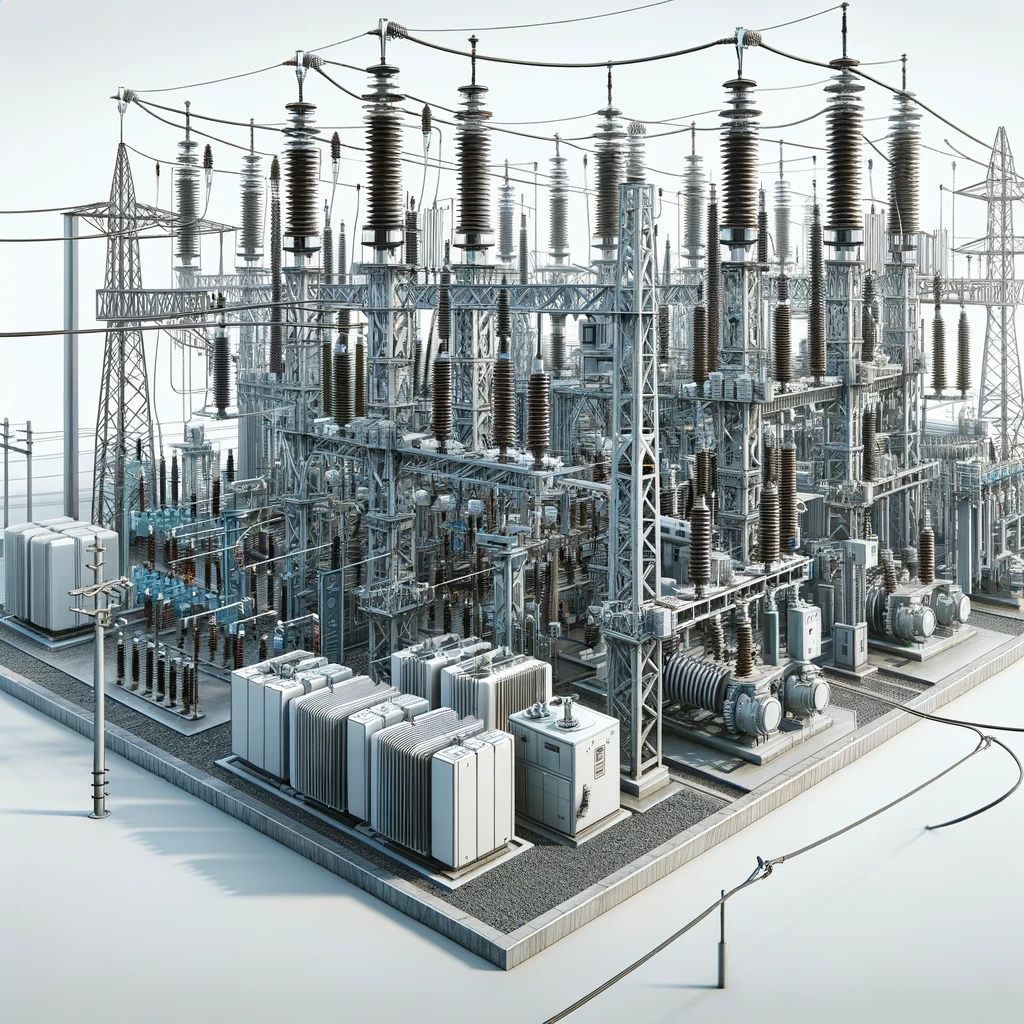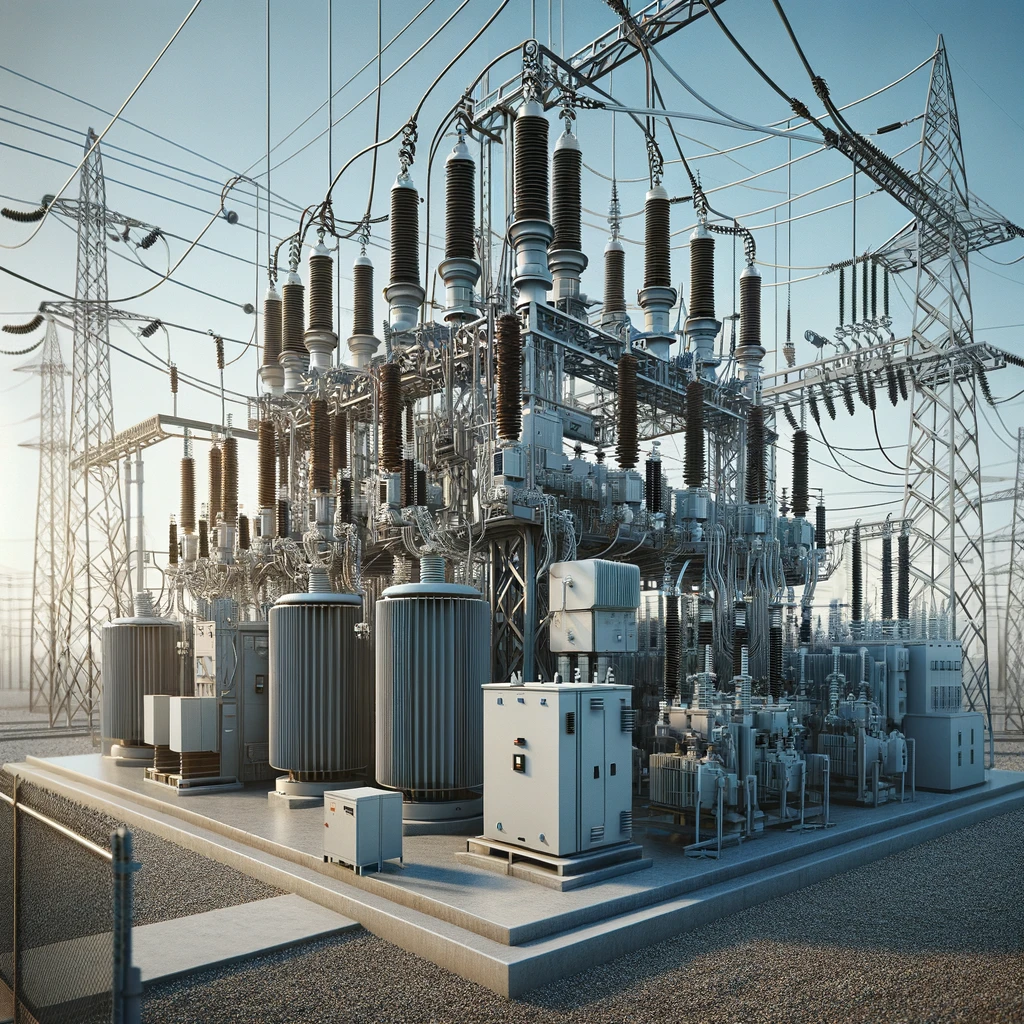Powering Up Our Knowledge Of Current Transformers In Construction
In the ever-evolving landscape of construction, the seamless integration and functioning of electrical systems play a pivotal role in the safety, efficiency, and sustainability of projects.
At the heart of these systems lies a component often unnoticed but indispensable – the Current Transformer (CT).
As we explore the multifaceted roles of CTs, from ensuring the precision of electrical measurements to safeguarding against potential faults and overloads, we’ll assess their significance not only in the monitoring and control of power systems but also in the broader context of construction safety and operational efficiency.
This discussion sets the stage for a comprehensive understanding of CTs, further comparing their functionality with Potential Transformers (PTs), and underscoring their collective importance in the meticulous orchestration of electrical systems in construction and beyond.
Let’s get energized and jump in!
Table of Contents
The Role of Current Transformers in Construction
Understanding Current Transformers
Current transformers (CTs) are vital components in electrical systems, including those used in construction projects. They work on the principle of electromagnetic induction, where the primary current passing through the conductor induces a proportionate secondary current in the CT.
The Purpose of Current Transformers
So, what exactly is the purpose of a current transformer in construction projects?
- Measuring and Monitoring: CTs are primarily used to measure electric currents in circuits. They help in monitoring the flow of current to ensure that it remains within safe limits.
- Instrumentation: CTs provide electrical inputs to instruments and meters, allowing for accurate readings of current values.
- Protection: In the event of a fault or overload, current transformers can detect abnormal current levels and trigger protective devices to isolate the circuit, preventing damage to equipment and ensuring safety.
- Integration with Control Systems: CTs are essential for integrating electrical systems with control and automation systems, enabling efficient operation and management of power distribution.
Key Components of a Current Transformer
| Component | Function |
|---|---|
| Primary Conductor | Carries the current to be measured |
| Core and Windings | Transforms the current for measurement |
| Secondary Terminals | Connects to measuring devices |
| Protection Class | Indicates the level of insulation and protection |
By understanding the purpose and functionality of current transformers in construction, professionals can ensure the safe and efficient operation of electrical systems in their projects.
So, the next time you see a current transformer on a construction site, you’ll know it’s not just a fancy-looking component but a critical player in ensuring electrical safety and performance!

Delving Deeper: Comparing CT and PT
Distinguishing between Current Transformers and Potential Transformers
Ringing in with another acronym in electrical engineering lingo, we encounter ‘PT’ – potential transformers. At first glance, CTs and PTs might seem identical since both are kinds of instrument transformers used in power systems. But what differentiates them at the core? Are they really interchangeable, or does each carry out its unique function?
Scope of Current Transformers (CT)
As adeptly explained above, the primary role of a CT is to decrease the current in an electrical circuit to a manageable level for measurement and protection purposes. It allows the electrical equipment to reflect the current in the high-voltage power line in a safe and easy-to-handle form. Simply put, the prime job of a CT is to maintain the ‘current’ version of the storyline.
Functionality of Potential Transformers (PT)
On the other side of the power ring, potential transformers, in contrast, are designed to monitor the ‘voltage’ in a circuit. PT’s core job is to meter and relay — meaning it steps down the high voltage of an electrical system to a lower, measurable level in a proportional ratio to maintain accurate voltage reading while ensuring the safety of the personnel handling it.
Ultimate Differences: CTs vs PTs
| Aspect | Current Transformer | Potential Transformer |
|---|---|---|
| Primary Function | Measure and monitor current | Step down voltage for measurement |
| Secondary Use | Protection of the circuit | Metering and relaying signals |
| Ratio | Based on current | Based on voltage |
| Safety | Cannot be open-circuited when loaded | Must never be short-circuited |
Ask yourself this: Can a court of law be successful with just lawyers, having no judges to regulate and interpret the laws? Just the same, an electrical system cannot function efficiently with just CTs or PTs. They need to coexist — each playing its own role in providing a safe, accurate, and effective power system.
Final Thoughts
The comprehension of the roles of both CTs and PTs is essential to the world of power systems. It allows the effective operation and management, ensuring safety while keeping a check on the accuracy of measures. Understanding the differences and roles helps us appreciate the vital yet unnoticed heroes in our daily electricity consumption.
Digging into the Differences: PT and VT
Understanding Potential Transformers
Potential Transformers (PTs) may seem familiar to those who understand the workings of Current Transformers (CTs). Like CTs, PTs play a significant role in electrical systems, including those incorporated in construction projects. They work on the basic principle of transforming higher voltage into a lower voltage that is suitable and safe to handle and use for protective and measuring devices.
Why Use Potential Transformers?
Are PTs simply another fancy buzzword in the electrical world or do they play a distinctive role?
- Measurement: PTs are used to scale down high voltages in power systems to a safe level for measurement apparatus. They provide accurate voltage readings for effective monitoring and control.
- Relaying: PTs provide valuable voltage inputs for protection relays. This information is crucial in identifying faults, thereby enabling systems to react appropriately.
- Safety: By transforming high voltages to a lower, safer level, PTs play a crucial role in injury prevention and equipment safety.
- Control: By providing accurate voltage measures, PTs are integral to maintaining efficient system operation and distribution of power.
Comparing PT and VT
The Purpose of Voltage Transformers
Now let’s shift gears to Voltage Transformers (VTs). VTs, often regarded interchangeably with PTs, have similar functions but are employed in different situations. They reduce voltage levels for metering and protective relay purposes in medium voltage systems, ensuring smooth operation of electrical systems.
PT and VT: Two Sides of the Same Coin?
At first glance, one may ask: aren’t PT and VT essentially the same? Indeed, they are similar in many ways. But each has its own set of applications and specifications, making understanding the difference crucial for anyone working with power systems.
| Aspect | Potential Transformer | Voltage Transformer |
|---|---|---|
| Primary Purpose | Voltage measurement | Voltage reduction for metering, protective relay purposes |
| Key Application | High voltage power systems | Medium voltage systems |
| Safety Mechanism | Steps down high voltage to a safe level | Insulates the secondary circuit from the primary high voltage system |
| Ratio | Based on voltage | Based on voltage |
So, can a highly experienced baker make the same delightful cakes without her trusty temperature-controlled oven? Likely not, right? Similarly, a power system needs both PTs and VTs for efficient functioning. They are two sides of the same coin, both crucial to providing accurate readings and ensuring safety in an electrical system.
Wrapping Up
By delving into the intricacies of CTs, PTs, and VTs, we’ve laid bare the vital roles these transformers play in the power system arena. Understanding their differences and purposes helps us appreciate how they work together to maintain safety, accuracy, and efficiency in every electrical system around us.

Further Insights: Exploring Why CT and PT are Used in Substations
The Significance of CT and PT in Substations
You might ask: Why are CT and PT so critical in substations? The simple answer lies in their core functionalities: accurate measurement, effective protection, precise control, and operating economy.
CT and PT: The Heart of Substations
Current Transformers (CTs) and Potential Transformers (PTs) are indispensable components in an electrical substation, much like the heart in an organism, ensuring a steady flow and uninterrupted life.
Purpose of CT in Substations
- Current Measurement: CTs in substations play a significant role in monitoring the current flow across the power lines. By stepping down the primary high current to a manageable level, CTs ensure accurate measurement.
- System Protection: The CTs detect unusual current levels, triggering protective devices to prevent system damage and safety hazards.
- Control: CTs are crucial for integrating with the automation and control systems, enabling better management of power distribution within the substation.
Role of PT in Substations
- Voltage Measurement: PTs in substations provide an accurate voltage reading by reducing the high system voltage to a lower, manageable level.
- Protection: PTs provide the necessary voltage inputs to protection relay systems, enabling fault detection and appropriate system response.
- Relaying: PTs play a pivotal role in controlling signals for effective relay operation with accuracy.
CTs and PTs in Substations: Working Hand-In-Hand
Current and potential transformers serve as the critical sensing devices in substations, providing data to measure, protect, control, and manage the electrical power systems effectively. But can one exist without the other?
Imagine if you could only taste sweet and not sour, or see light but not shadow. Would that truly be a fulfilling sensory experience? In the same vein, although serving different functions, CTs and PTs work in unison to maintain a robust and reliable system.
| Aspect | Current Transformer | Potential Transformer |
|---|---|---|
| Primary Function in Substation | Current Measurement and Protection | Voltage Measurement and Protection |
| Secondary Function in Substation | Integration with Control Systems | Relay Control Signals for Protection |
| Essential For | Safe Current Monitoring and System Protection | Accurate Voltage Reading and Fault Detection |
Final Remark
Understanding the role of Current Transformers and Potential Transformers in substations gives us a glimpse into the intricate choreography that goes on behind the safety, accuracy, and efficiency of power systems. Indeed, CTs and PTs may be small components, yet they play big roles in the vast electrical orchestra that is a substation.
The Importance of Current Transformers in Construction
Current transformers (CTs) serve as crucial elements in electrical systems within construction projects. Operating on the principle of electromagnetic induction, CTs play a significant role in accurately measuring electric currents and ensuring the safety and efficiency of power distribution.
From monitoring and measuring current flow to aiding in instrumentation and protection against faults, current transformers contribute to maintaining safe operating conditions and preventing equipment damage. Additionally, their integration with control systems enables seamless operation and management of power distribution in construction environments.






